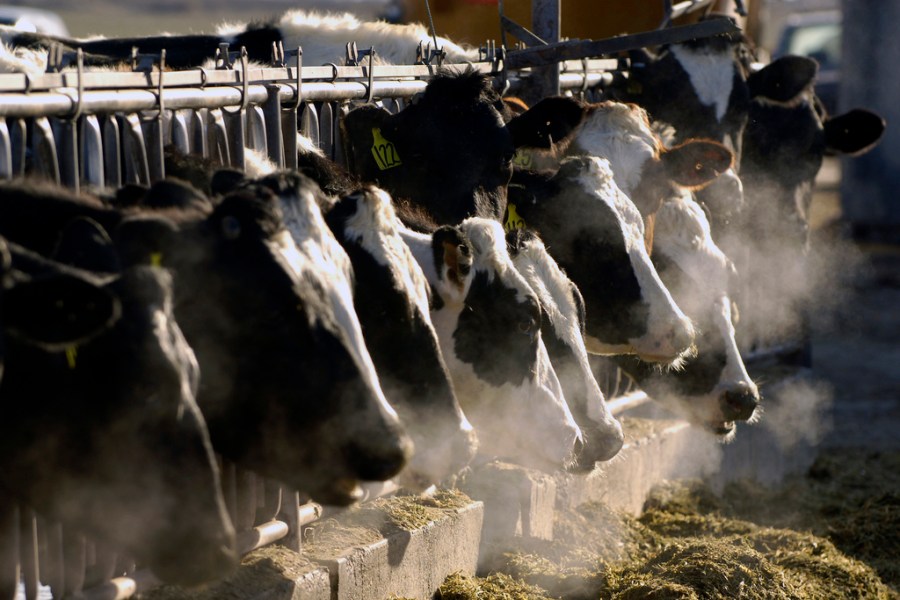
Dairy cows in Nevada have been infected with a new strain of bird flu virus different from the one circulating in other herds throughout the past year, the U.S. Department of Agriculture (USDA) said.
The strain found in the Nevada cattle raises new questions about the spread of the avian influenza virus in dairy cows, which many assumed began after the virus jumped from birds in Texas.
The newer version of the virus matches the strain currently found in wild birds and domestic poultry, as well as in the severe human cases — a Louisiana man who died in January, and a Canadian teen who was hospitalized for more than two months and nearly died.
The virus has never before been seen in cattle, ruling out the possibility that the Nevada cows caught it from another infected herd.
Michael Worobey, an evolutionary biologist at the University of Arizona, said the initial hope was that a rare mutation allowed the virus to jump from birds and settle in cattle.
“Now, we know that’s not true,” Worobey said. “It means that we might be playing Whack-a-Mole with it just jumping in over and over again, and the tools that we hoped to use to get rid of [the virus] might not work as well.”
This is also the second known instance of cattle becoming infected after the virus jumped from wild birds, which experts said shows that cattle are susceptible to other H5N1 viruses, not just the specific subtype that started in Texas and has since infected 950 dairy herds in 16 states, according to USDA.
“Right now it’s unclear how widespread this is. But given D1.1’s prevalence in wild and domestic birds right now, we should be aggressively testing exposed dairy cattle who are near H5 positive poultry premises to see whether this phenomenon is present beyond Nevada,” Louise Moncla, a pathobiologist at the University of Pennsylvania, said in an email.
But since testing has not been very thorough in many states, given the reluctance of farmers to get their herds tested, it’s possible there have been other undetected instances of the virus spilling over from birds to cattle.
The USDA said the detection of this version of the virus was confirmed Jan. 31 after it was found in raw milk collected from a silo as part of a national milk testing strategy that started in 2024.
Federal officials have maintained there is a low risk to the general public, and experts said there doesn’t appear to be a change based on the new findings.
But Moncla also noted the human cases associated with exposure to infected cattle have been mild, while at least one severe case has come after exposure to wild birds or backyard flocks.
“Though it’s too soon to make any conclusions about this, it is concerning. We don’t yet know if these viruses are better at infecting people. But if they are, then introduction into dairy cattle could enhance human exposure risk,” Moncla said.
Worobey said he is leading a team of scientists to try to find out how long the latest strain was circulating in cattle before it was discovered. But he said the finding diminishes the prospect that the virus could be eliminated from cattle entirely, because it was such a different version of the virus that made the jump from birds into cattle.
The immunity built up in the dairy cattle population against bird flu may not hold up well against the D1.1 genotype.
“The cattle might have to start fresh in terms of building up immunity to this strain as well,” Worobey said.
There are also concerns about potential vaccines, and if they are so specific to the first variant that they’re not going to help block transmission of the new variant.
There are currently no licensed H5N1 vaccines for cows, but some are in development.











